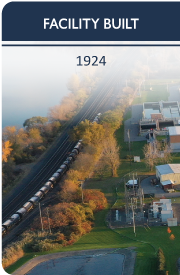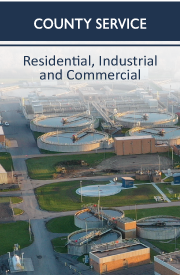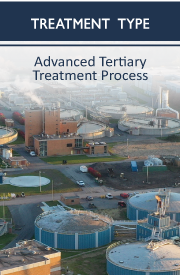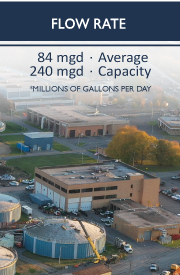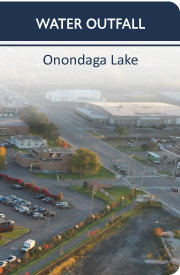In 1896, the City of Syracuse began building its original sewer system as the completion of the Erie Canal and railroads, and roadways established the city as the heart of the Upstate region. However, this early wastewater infrastructure discharged directly into streams and drainage ditches, contaminating Central New York waterways. In the early 1900s, the Syracuse Sewer Board was established to investigate sewage disposal and flooding within the city limits. After identifying methods for treating wastewater, including screening, grit removal, and basic anaerobic processes, the Syracuse Sewage Treatment Works plant was built and operational October 15, 1924.
By 1940, swimming in Onondaga Lake was banned due to pollution from industrial development and a growing population. At the same time, the City of Syracuse put the Ley Creek Sewage Treatment Plant into operation and renamed the Syracuse Sewage Treatment Works to the Hiawatha Sewage Treatment Plant. In 1950, Onondaga County assumed responsibility for wastewater treatment in Syracuse and began construction on the Hiawatha Sewage Treatment Plant, transforming it into the Metropolitan Syracuse Wastewater Treatment Plant (Metro), which included advanced processes for treating sewage before its discharge into the environment.
Over the years, Metro has continuously upgraded its technology and processes. It is the largest of Onondaga County’s wastewater treatment plants, treating 84 million gallons of wastewater per day. Approximately 60% of the wastewater entering the Metro facility comes from households, industrial, and commercial customers in the City of Syracuse, with the remainder coming from neighboring towns and villages.



